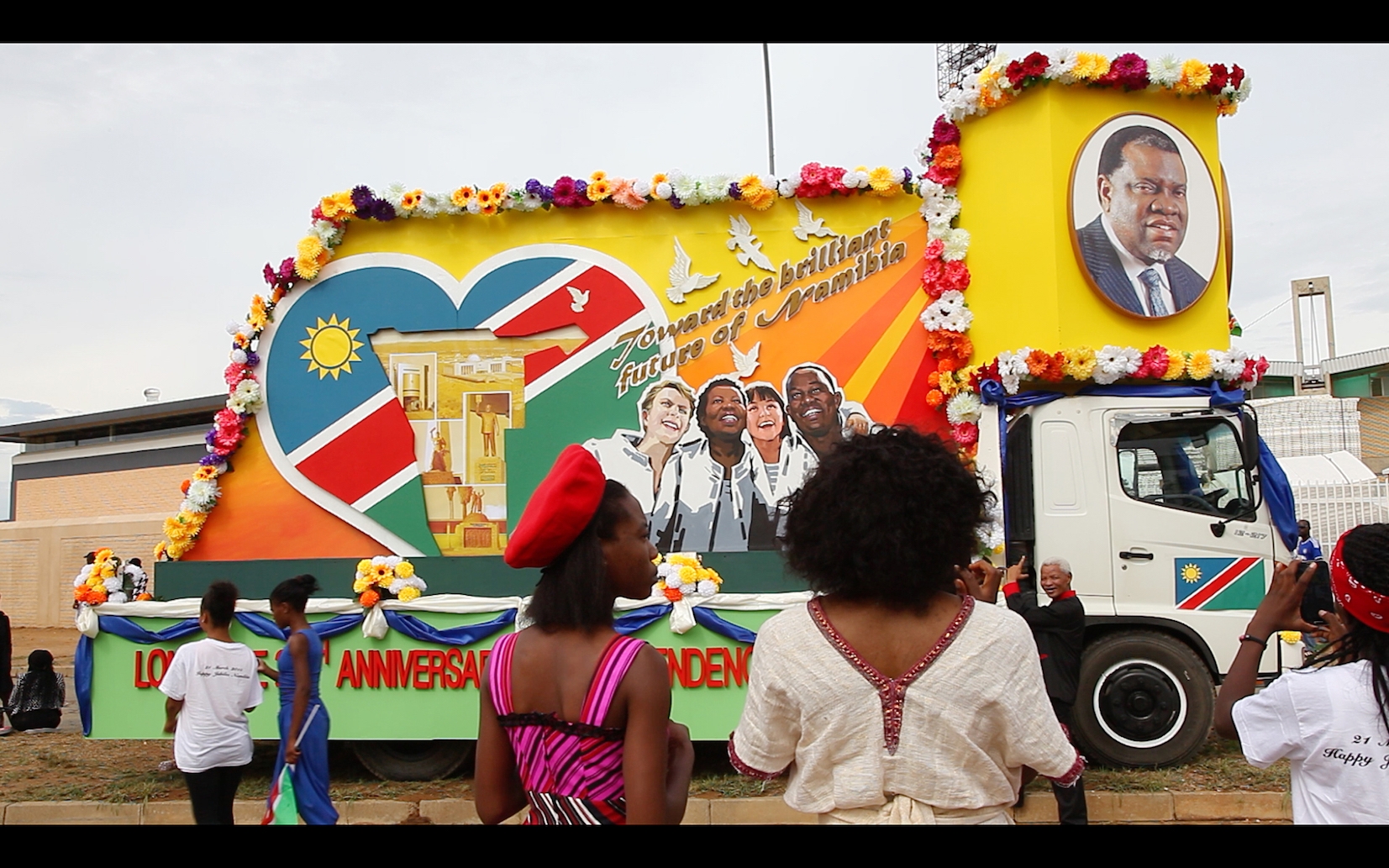This two-part group exhibition of Berlin-based artists, the culmination of three years’ research by an NGBK project group of six, features a wide-ranging cast. Both sites host Mathilde ter Heijne’s ever-growing collection of photographs of anonymous women (shot between 1839 and the 1920s), made into giveaway postcards, with biographies on their versos of contemporaneous women whose progressive stories have been largely elided. Also represented (in Katrin Winkler’s filmed interviews) are Namibian women sent as children to the GDR to escape their country’s struggles, then abruptly returned following the Berlin Wall’s fall. Included too, with their own photographic work, are such historical figures as archaeologist/writer/secret agent Gertrude Bell (1868–1926), who played a major role in the establishment of modern Iraq.
In recognition of how deeply colonialist thinking remains ingrained in structures of knowledge, the lives of women entangled, complicitly or otherwise, in colonial projects – and the artworks they have inspired – are here linked to the question of how feminism operates across cultures today. These are timely issues, finding resonance in recent cases: eg the removal of journalist Rokhaya Diallo from the French digital council after pressure mounted against her counter-stance to dictates from the ‘colour-blind’ state, namely the ‘burka ban’. With this in mind, an exhibition about mobility, race and gender in so-called postcolonial Europe feels more like a marker than an endpoint, and part of an ongoing discussion that must necessarily breach the realms of art and academia.
This has been somewhat addressed in staging Reframing Worlds not only at Kreuzberg’s NGBK but also at Galerie im Körnerpark, a former orangerie in a neo-baroque park (built between 1912 and 1916) in the backstreets of Neukölln, the south-eastern borough famous for Berlin’s highest density of immigrants and ‘ex-pat’ creatives (note the colonial mindset behind that customary discrepancy in terminology). Here it is more likely that local residents from all walks of life may come into contact with an exhibition whose title does, admittedly, reflect a tendency in certain factions of the German artworld to make everything sound like a PhD thesis.
Meanwhile, the artworks in this long, high-ceilinged gallery are arranged with a touch of degree-show awkwardness (rather shy of the imperial space in how they hug the walls), or are crowded down the far end. There is room, nevertheless, to stand back and feel the returned stare of Rajkamal Kahlon’s Do You Know Our Names? (2017), mixed-media portraits reworking prints of late-nineteenth- and early-twentieth-century ethnographic photographs that sought to codify ‘savage’ or ‘primitive’ features. Kahlon applies gouache to the prints, a medium that evokes antiquarian ethnographic studies. Painting here becomes a form of manually engaged care-work, reimagining, updating: bands across a woman’s mouth, equally suggesting a muzzle or sinister measuring methods, are formally echoed in a multi-stranded necklace, and again in the red stripes of a ready-for-the-office blouse (Kahlon’s addition), the type found in any modern high-street shop (where the necklace could also easily appear, its ‘ethnic’ origins a distant point).
Works in the similarly cavernous though more neutral NGBK are given room to breathe yet also converse. Judith Raum’s pastel-toned paintings of rubble and shards, set on the floor, scan like fragments responding to Gertrude Bell’s stylistically unconventional, black-and-white field photographs of 1905–20. Taken in what would be today Syria, Turkey and Iraq, these are full of unexpected compositions and the motion of an affected witness who’d initiated her own expeditions with local guides. This in turn relates to Susanne Kriemann’s deliberate historical conflation/confusion of novelist (and archaeologist) Agatha Christie’s aerial photographs of the Syrian desert and her own photos of the region. Perhaps nobody typifies a ‘vision of Britishness’ quite like Christie, who was made a Dame Commander of the Order of the British Empire in 1971 and whose novels are filled with nasty racial slurs. ‘The best time to plan a book is while you’re doing the dishes’, she once said, with a very English kind of disingenuous self-deprecation, suggesting that, despite her success, she was still one of a legion of Little Englander housewives across the land. That she was ‘doing the dishes’ in her other, less recognised archaeological work, in deserts across the Middle East, is an example of the tensions that Reframing Worlds seeks to highlight when considering the complex intersections of feminism, race and mobility.
Reframing Worlds – Mobility and Gender in a Postcolonial, Feminist Perspective Galerie at im Körnerpark, Berlin, 4 November – 21 January & Neue Gesellschaft für Bildende Kunst (NGBK), Berlin, 2 December – 21 January
From the April 2018 issue of ArtReview
